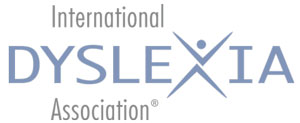Adapted from “Response to Intervention: An Idea Whose Time Has Come”by Linda S. Siegel, Ph.D., in Volume 43, No. 3, (Summer), Perspectives on Language and Literacy
The goal of Response to Intervention (RTI) is to recognize problems early in a child’s school career and provide appropriate intervention as soon as possible. When educators, or anyone else with an interest in education, first hear about RTI they think it sounds like a wonderful idea. With its emphasis on helping the student as quickly and efficiently as possible, like parenthood, who could be against it? The reality of RTI is more complicated. RTI has many different interpretations and variations on its practice. However, there are some guiding principles:
- Provide good basic instruction, called Tier 1 in the RTI system.
- Identify children at risk for learning difficulties early in kindergarten during their school career.
- Provide intervention as soon as it is needed.
- Monitor a student’s progress, especially for the children at risk.
- If good Tier 1 or basic instruction is not successful, then more targeted small group intervention is needed. If this small group intervention is not successful, then intensive individualized instruction is needed.
At least, that is the ideal situation. However, putting RTI into practice is not so simple. One of the important aspects of RTI is to provide good intervention. The emphasis is on intervention, not assessment and diagnosis. But providing good intervention is not easy. There is sometimes reluctance to identify children at risk for academic difficulties. Many hold the belief that they will “grow out of it” and that children differ and we should try not to fit them into a mold. However, we know that children who are struggling realize that they have problems, even as early as kindergarten or first grade, and these children suffer loss of self-esteem and possible emotional difficulties if their problems are not recognized.
Some states use the RTI process to establish eligibility for special education services. Unlike parenthood, there is opposition to RTI, mostly from those who advocate a traditional model of evaluating for eligibility that leads to labeling before any intervention is offered to the child. Some professionals advocate that one cannot evaluate a learning disability such as dyslexia until an intervention has been attempted. However, interventions vary in quality and unless good intervention is offered, valuable time may be lost.
No educational program can provide all the answers. RTI is only as good as the particular practices that are used.
For more information, click here for access to a full-day symposium on RTI from the 66th International Dyslexia Association Conference in 2015. The symposium, facilitated by Martha Hougen, tackled many of the questions facing those working to effectively implement RTI.
Click here for a helpful evidence-based, annotated list of websites to support RTI implementation provided by Pamela J. Bell of the University of Texas at Austin, Meadows Center for Preventing Educational Risk.

